.
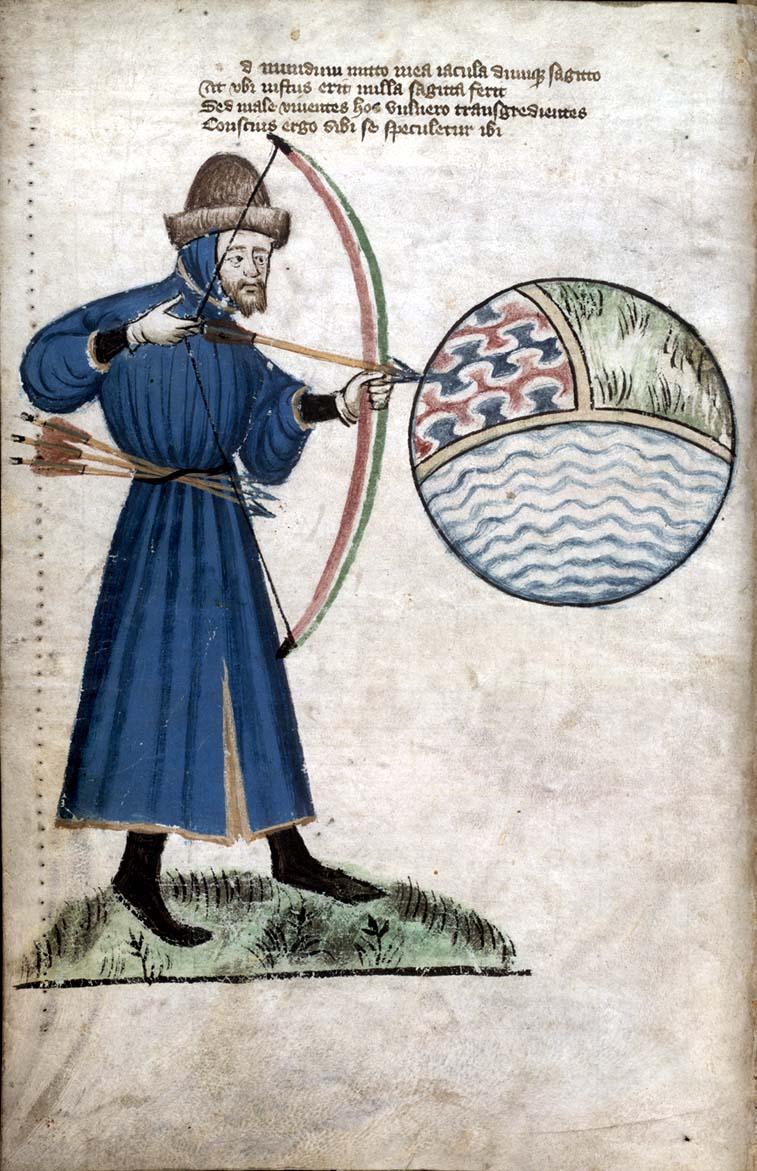
John Gower shooting an arrow into the "air" compartment of a spherical Earth in a portrait from his Vox Clamantis and Chronica Tripertita, from a revised edition published c. 1400 (before Gower's death): in English, text on above image in Vox Clamantis reads: "I throw my darts and shoot my arrows at the world. But where there is a righteous man, no arrow strikes. But I wound those who live wickedly. Therefore let him who recognizes himself there look to himself": image by Bkwillwm, 30 November 2005 (Glasgow University Library)
For sparinge of a litel cost
Fulofte time a man hath lost
The large cote for the hod [hood].
John Gower, Confessio Amantis, c. 1390 v. 4785
Fulofte time a man hath lost
The large cote for the hod [hood].
John Gower, Confessio Amantis, c. 1390 v. 4785

Medieval artistic representation of a spherical Earth, with compartments representing earth, air and water: detail from a portrait of John Gower, c. 1400 (see above): image by Leinadz, 21 January 2006 (Glasgow University Library)

Partial lunar eclipse: photo by Graham.Beverley, 16 August 2008; image by Tomruen, 16 February 2009
Oblate (flattened) spheroid. Because of the combined effects of gravitation and rotation, the earth's shape is roughly that of a spheroid slightly flattened in the direction of its axis. For this reason, in cartography the earth is often represented by an oblate spheroid rather than a sphere: original image by AugPi, using Mathematic, 2004; this image by Anarkman, 3 July 2005

Venn's four ellipse construction: four ellipses with all 15 possible intersections: image by RupertMillard, 24 February 2009

A 4-sphere Venn diagram, representing a 4-ary Boolean function. (Four intersecting spheres form the biggest possible Venn diagram, that represents all symmetries and is accessible to humans. The 15 intersections correspond to the vertices of a tesseract.): image created with POV-Ray by Lipedia, 2011
For want of a naile the shoe is lost, for want of a shoe the horse is lost, for want of a horse the rider is lost.
Different types of horseshoes used in World War I, horseshoe on left with frost-nail; from collection of Mémorial de Verdun: photo by historicair, 13 October 2006
Different types of horseshoes used in World War I, horseshoe on left with frost-nail; from collection of Mémorial de Verdun: photo by historicair, 13 October 2006

Projection of the Lorenz attractor (icon of chaos theory), example of a non-linear dynamical system: plot of the trajectory Lorenz system for values ρ=28, σ = 10, β = 8/3: image by Wikimol/DSchwen, January 2006
Textile Cone Snail (Conus textile), with tesselated shell pattern development showing the generation of complex, seemingly-random patterns from an initial simple structure (an illustration of Rule 30, describing aperiodic, chaotic behaviour of a one-cellular automaton), Great Barrier Reef, Australia: photo by Richard Ling, 2005
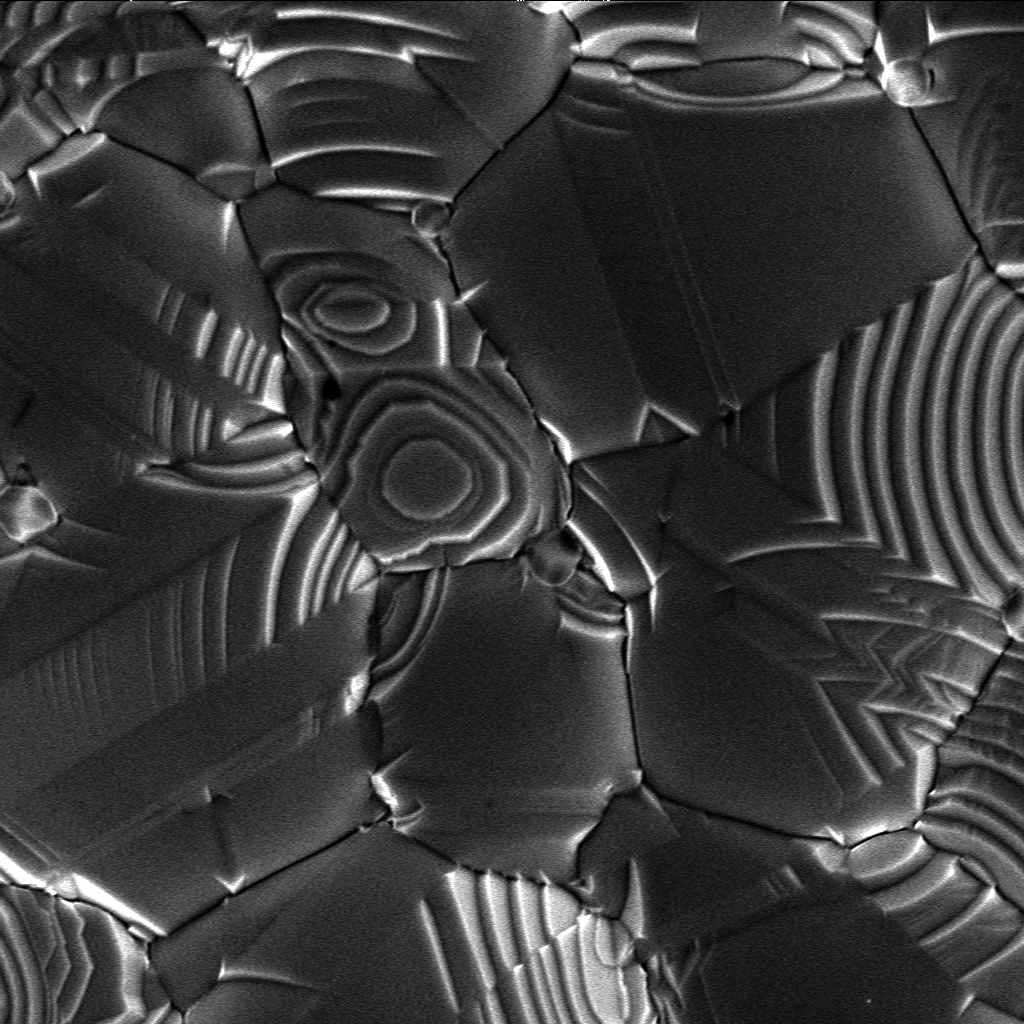
Silver crystal growth over a ceramic substrate: JEOL microscope image by Fernando Estel, 29 January 2008
No detail‥.was too small to be passed over. ...‘For want of a nail,’ as the proverb said.
Mary McCarthy: from Missionaries & Cannibals, 1979

A simple torus fading out to a wireframe structure, simulating a cellular automaton with infinite periodic tiling: POV-Ray image by Kieff, 10 October 2006
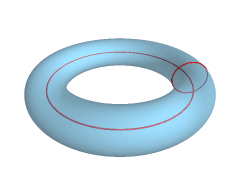
Sphere-like degenerate torus. A torus is a surface obtained by revolving a circle about a coplanar axis in three dimensional space. As the distance from the circle's center to the axis of revolution approaches zero, the torus becomes a spindle and then degenerates into a sphere: POV-Ray image by Kieff, 19 May 2007

A zafu, pouffe-shaped traditional seat cushion used in zazen (sitting meditation): photo by Dontpanic, 2 March 2008
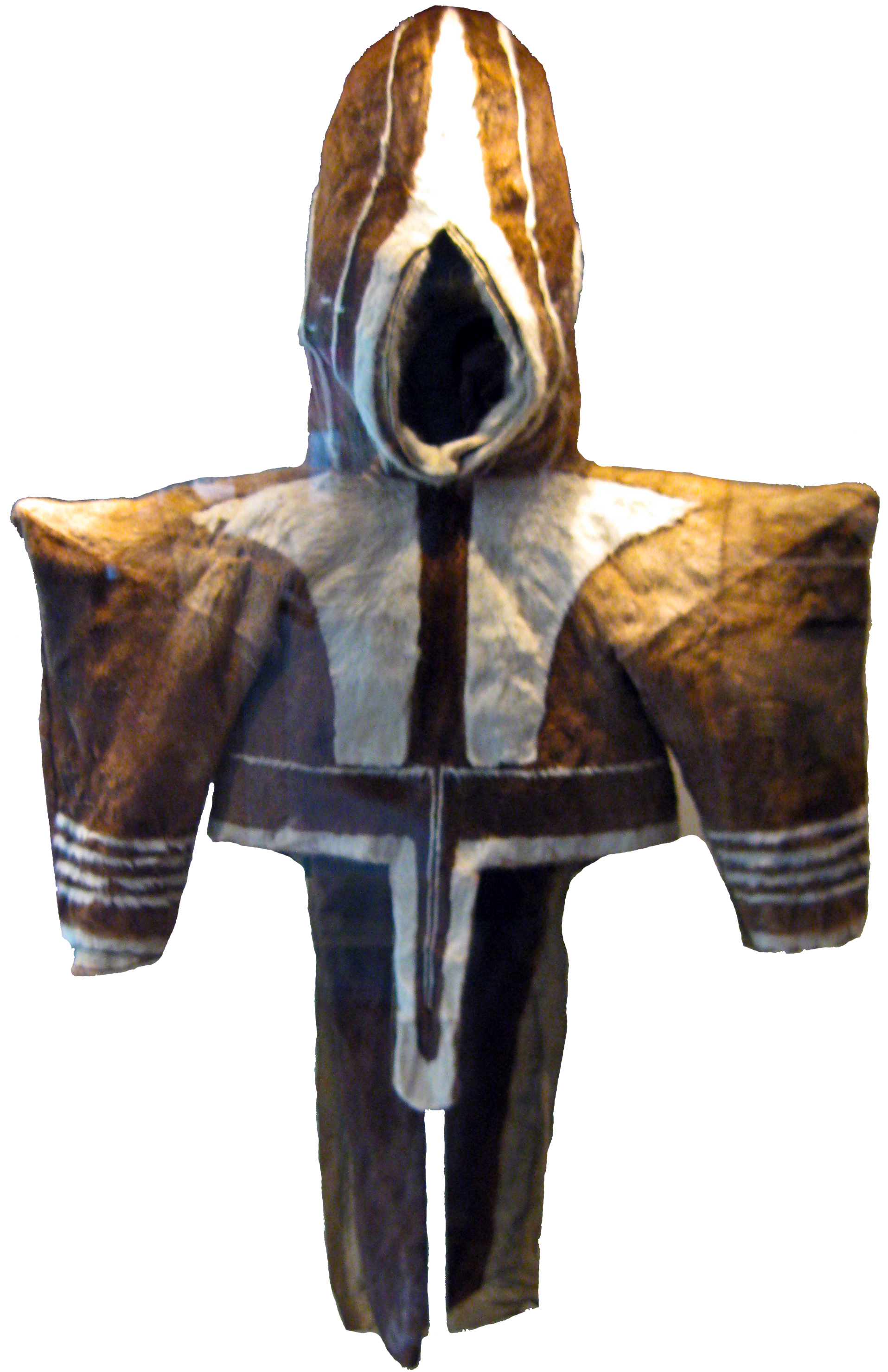
"...the large coat for the hood": Inuit woman's parka, made from skins of summer caribou, early 1900s: image by Leoboudv, 4 February 2010 (University of British Columbia Museum of Anthropology)
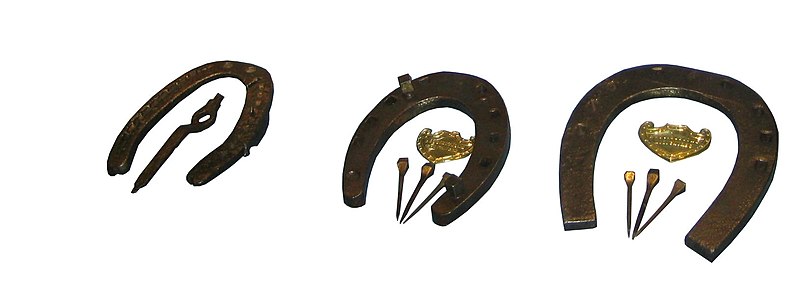



3 comments:
Tom,
Thanks for this, beautiful! -- "example of a non-linear dynamical system:"
6.30
light coming into sky above still black
plane of ridge, red-tailed hawk calling
in foreground, sound of wave in channel
concept, that straight line
connected with motion
which for all systems, that
is, whatever physical
grey white of sky reflected in channel,
line of pelicans flapping toward point
Tom - I don't know whether the relative of 'For want of a nail ... ' that I grew up with is specific to the Great British (sic) nautical past, or if it found its way across to you - 'Don't spoil the ship for an ap'orth of tar'?
Barry,
Obviously it's the same concept, tailored to the purposes of an island nation.
The "original", it's thought, is actually from the French:
Par ung seul clou perd on ung bon cheval. (By just one nail one loses a good horse.)
(Jean Molinet, c. 1507)
Post a Comment